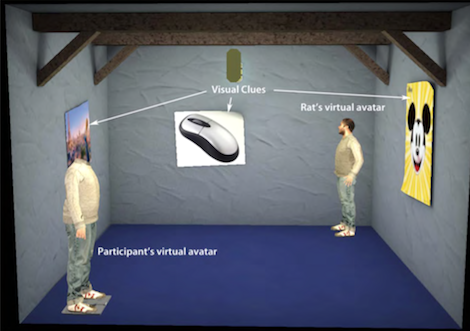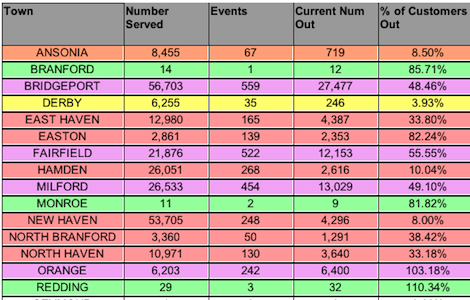Marc Abrahams's Blog, page 538
November 2, 2012
Rotate Your Owl [demo + music]
Rotate your owl, with or without music:
[HT investigator Mary Ellen Kovich]
BONUS: For background, see the study:
“THE VESTIBULAR SYSTEM OF THE OWL,” K.E. Money and M.J. Correia, Comparative Biochemistry and Physiology Part A: Physiology, Volume 42, Issue 2, 1 June 1972, Pages 353–354, IN3–IN5, 355–358.
Abstract: Owls have a curious variability in the postrotatory head nystagmus following abrupt angular deceleration. Owls can exhibit a remarkable head stability during angular movement of the body about any axis passing through the skull. The vestibular apparatus in the owl is bigger than in man, and a prominent crista neglecta is present. The tectorial membrane, the cupula, and the otolithic membranes of the utricle, saccule and lagena are all “attached” to surfaces in addition to the surfaces bearing hair cells; these attachments are very substantial in the utricular otolithic membrane and in the cupula.

Excelling at use of a mental abacus, and words, too
“In this clip the two girls are adding up 30 digits in 20 seconds while simultaneously playing ‘shiritori‘, a Japanese game in which you must say a word beginning with the last syllable of the previous word,” says the report by Alex Bellos, in The Guardian. The subhead on the article explains: “Flash Anzan, in which contestants add up numbers with an imaginary abacus, reveals the astonishing potential of the human brain – and makes for a breathtaking spectacle too.”
Bellos also writes: “I was in Japan making a radio documentary about numeracy, Land of the Rising Sums, which was broadcast on BBC Radio 4 at 11am on Monday 29 October. Listen again.”

November 1, 2012
Anti-Luck : the debate continues
“Sam walks by Big Ben at three o’clock, looks up at its face, and thinks, ‘It is now three o’clock’. However, unbeknownst to Sam, Big Ben malfunctioned and stopped precisely twelve hours ago.”
 So maybe Sam just got lucky? But what would have happened if he’d passed by at 12:55? Such happenstances are examined in great detail in a recent paper for Philosophia, volume 39, number 3 (2011), pp. 547-561 - newly adding to the debate regarding the concept of Anti-Luck.
So maybe Sam just got lucky? But what would have happened if he’d passed by at 12:55? Such happenstances are examined in great detail in a recent paper for Philosophia, volume 39, number 3 (2011), pp. 547-561 - newly adding to the debate regarding the concept of Anti-Luck.
The paper also features Sam’s fortuitous experiences with a misbehaving calculator which manages to tell him that 131,071 is a prime number (even though its circuits have already been irreparably damaged by his neighbour’s hazardous experiments with plasma discharges). And, when he picks up a book on homeopathy, it (quite luckily) informs him that water is H2O.
For comprehensive details see the full paper: Anti-Luck Epistemologies and Necessary Truths* by professor Jeffrey Roland and professor Jon Cogburn of the Philosophy Department at Louisiana State University, US.
Notes:
[1] Strictly speaking, Big Ben can’t visually display the time – since it’s a bell, not a clock. The Clock Tower (recently renamed The Elizabeth Tower) at the Palace of Westminster does have a clock, called the Great Clock of Westminster, which some, mistakenly (sometimes along with the tower itself) call Big Ben.
[2] Marie von Ebner-Eschenbach is credited (at least by Wikipedia) as being the source of the phrase : “Even a stopped clock is right twice a day.”
[3]
THERE IS BUT ONE STEP
FROM
THE SUBLIME
TO
THE RIDICULOUS.
-Napoleon Bonaparte
(Quoted from professor Cogburn’s Personal Website)

Ig Nobel ponytail winner to lecture at Leeds
2012 Ig Nobel Physics Prize co-winner Patrick Warren, of Unilever, will give a special lecture at Leeds on November 19. Here are details, from the University of Leeds and the Institute of Physics:
Come along to an Institute of Physics public lecture at the University of Leeds! Learn about PONYTAIL PHYSICS: – how to use physics to predict the shape of a ponytail. The speaker, Professor Patrick Warren, is the recent recipient of the Ig Nobel prize in physics.
Monday 19th November 7-8pm
Western Lecture Theatre, Business School, University of Leeds
This event is free and open to the public.
As the lecture has generated a lot of interest over previous years, all parties, particularly those from schools, containing more than five people are asked to contact Dr Lorna Dougan (l.dougan@leeds.ac.uk) to reserve seats. Directions to the University are here.

Rats Will Encounter Rat-Size People, and Vice Versa
Rats and people (or any two different size critters) can encounter each other on the same scale, virtually, under the scheme outlined in a new study. The image below demonstrates virtual rat-sized persons in a rat world. The study is:
“Beaming into the Rat World: Enabling Real-Time Interaction between Rat and Human Each at Their Own Scale,” Jean-Marie Normand, Maria V. Sanchez-Vives, Christian Waechter, Elias Giannopoulos, Bernhard Grosswindhager, Bernhard Spanlang, Christoph Guger, Gudrun Klinker, Mandayam A. Srinivasan, Mel Slater [pictured here], PLoS ONE 7(10), 2012, e48331. The authors, at University of Barcelona, Spain, Technische Universität München, Munich, Germany, Guger Technologies (g.tec), Schiedlberg, Austria, Massachusetts Institute of Technology, USA, University College London, London, UK, and other institutions, explain:
“The participant in the IVR [Immersive Virtual Reality] is represented in the destination by a physical robot (Teleoperator) and simultaneously the remote place and entities within it are represented to the participant in the IVR…. Here, we show how such a system can be deployed to allow a human and a rat to operate together, but the human interacting with the rat on a human scale, and the rat interacting with the human on the rat scale. The human is represented in a rat arena by a small robot that is slaved to the human’s movements, whereas the tracked rat is represented to the human in the virtual reality by a humanoid avatar.”
The authors conclude: “the system functioned well and that the humans were able to interact with the rat to fulfil the tasks of the game. This system opens up the possibility of new applications in the life sciences involving participant observation of and interaction with animals but at human scale.”

October 31, 2012
Medico-Legal Disagreement About Nipples
Personal peer review – peering at data with one’s own eyes – is deemed crucial to some kinds of investigation. This eyeballed scrutiny figures in the war against indecent images of children. A study called Tanner Stage 4 Breast Development in Adults: Forensic Implications looks at the very different things different experts saw when they all peered at the same female nipples.
Many websites with pictures of unclad persons feature a statement specifying that all those photographed are over 18. In some court cases, expert physicians testify as to the possible age of the people in some of those photos. The new study and other research demonstrates that such experts can be – and often are – wrong….
So begins this week’s Improbable Research column in The Guardian.

The powerful lack of power in Redding
This chart, created by The United Illuminating Company, shows how Connecticut cities and towns are still affected by the recent hurricane. It says that 110.34% of the electricity customers in the town of Redding are still without power. The United Illuminating Company’s web site says, in big letters, “WE ARE IN STORM MODE“.
(Thanks to investigator Sue Maloney for bringing this to our attention.)

October 30, 2012
Contemplating death — not so bad after all
Some might jump to the conclusion that ruminating about death and destruction is a major downer – with potentially deleterious consequences for individuals and society at large. But a joint US/Dutch research team have published findings which shine a positive beam of light into this potentially murky area. With the sombre implications of Terror Management Theory (TMT) in mind, the team investigated instead “… the beneficial trajectories of the terror management process”, and discovered that :
“Contemplating death doesn’t necessarily lead to morose despondency, fear, aggression or other negative behaviors, as previous research has suggested.”
Far from it, say the researchers :
“The awareness of mortality can motivate people to enhance their physical health and prioritize growth-oriented goals; live up to positive standards and beliefs; build supportive relationships and encourage the development of peaceful, charitable communities; and foster open-minded and growth-oriented behaviors.”
Optimists and pessimists alike can find further details in (the abstract of) – When Death is Good for Life : Considering the Positive Trajectories of Terror Management (Personality and Social Psychology Review, November 2012, vol. 16 no. 4, pp. 303-329).

Updated index of new patents for golfballs (Oct. 2012)
 The monthly number of new US patents for golfballs fell sharply in October – down almost 28% on the figures for September 2012. Just eight new golfball concepts were patented this month.
The monthly number of new US patents for golfballs fell sharply in October – down almost 28% on the figures for September 2012. Just eight new golfball concepts were patented this month.
• Golf ball and method for designing same
• Golf ball incorporating ionomeric component having property gradients
• High performance golf ball having a reduced-distance
• Multilayer core golf ball having hardness gradient within and between each core layer (8,298,097)
• Multilayer core golf ball having hardness gradient within and between each core layer (8,298,098)
• Multi-layer core golf ball having thermoset rubber cover
COMING SOON(ish) Year-end roundup – a graphical analysis of all the new golfball patents 2012.

Dr. Kool joins the Hair Club for Scientists (LFHCfS)
Anneleen Kool has joined the Luxuriant Flowing Hair Club for Scientists (LFHCfS). Allison Perrigo, who nominated her, says:
Anneleen Kool is a systematist, ethnobotanist and future high-throughput next generation cryptozoologist of the highest rank. She has just successfully defended her dissertation at Uppsala University. It has been hypothesized that her long, luxuriant hair is a form of ornamental compensation, trying to make up for the small, scruffy and generally unimpressive group of plants she studies (see Kool et al 2007, Kool et al 2012). However, as she moves on to work with bigger and more beautiful plants the hair remains. Some day we hope to discover its true meaning. Until then we can only gaze in wonder, as (in this photo) we watch the lab coat clad Dr. Kool ride off into the sunset on a camel, luxuriant hair trailing behind her. It doesn’t get cooler than that.
Anneleen Kool, PhD, LFHCfS
Lecturer
Botanical Garden
Natural History Museum
University of Oslo
Oslo, Norway


Marc Abrahams's Blog
- Marc Abrahams's profile
- 14 followers


























